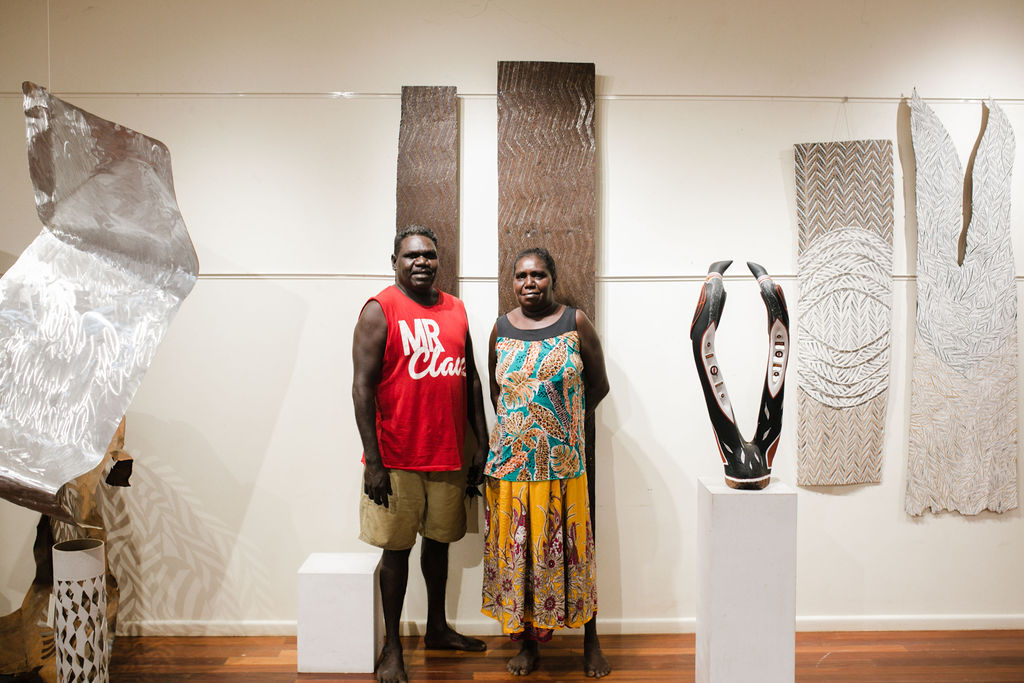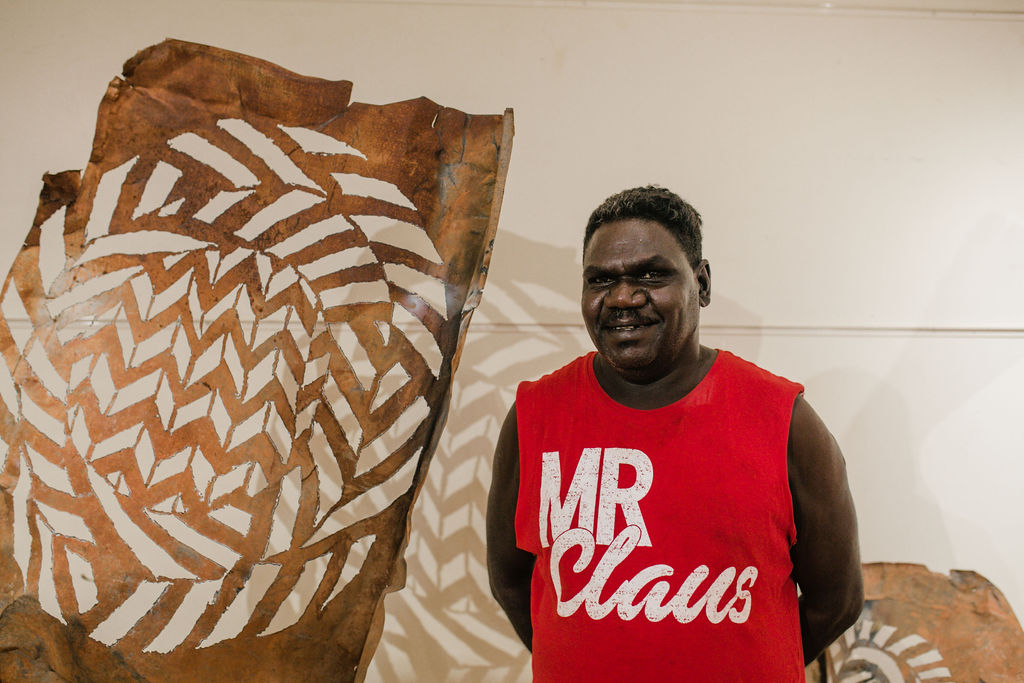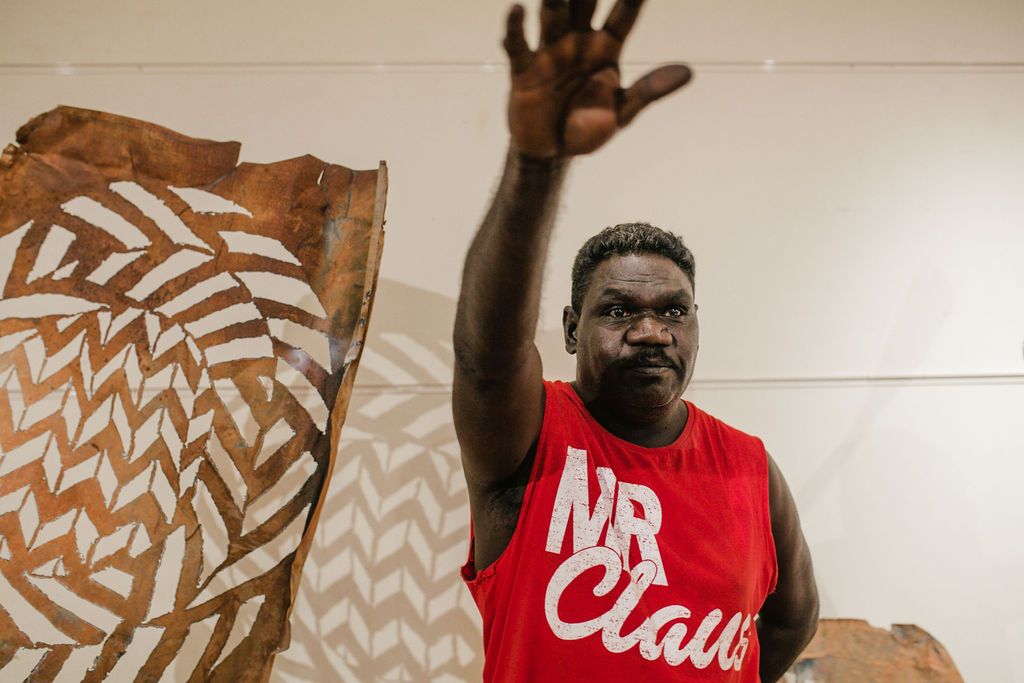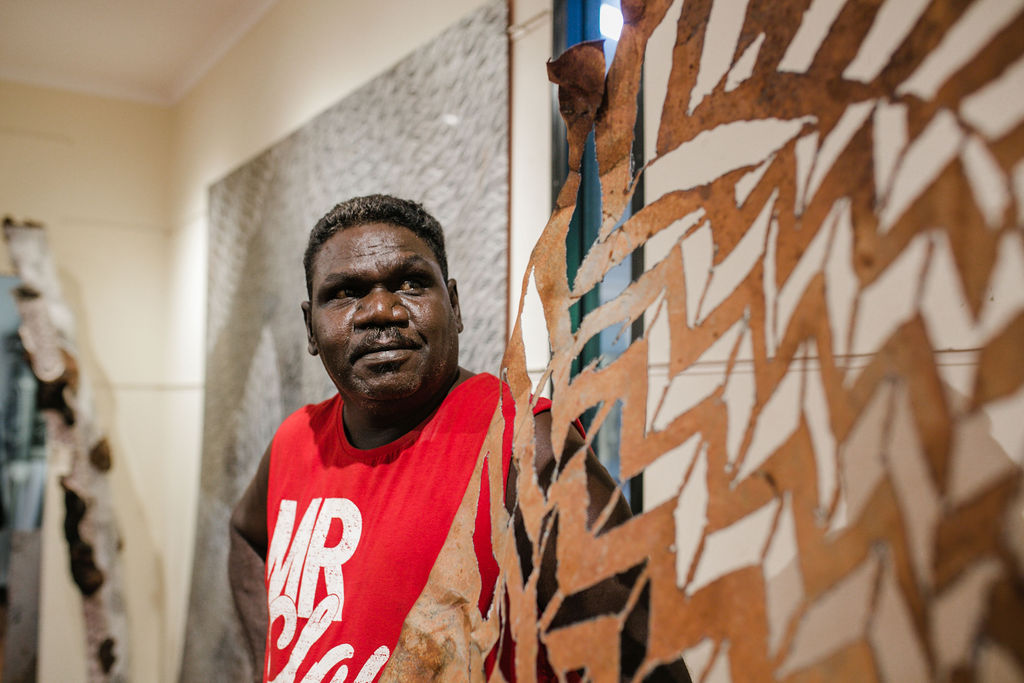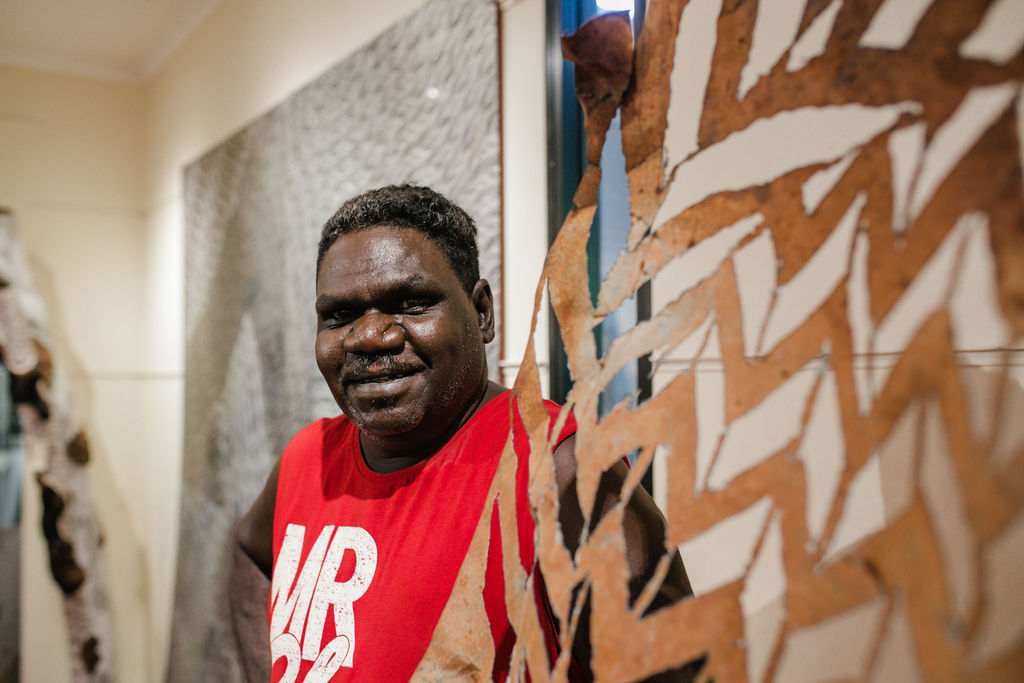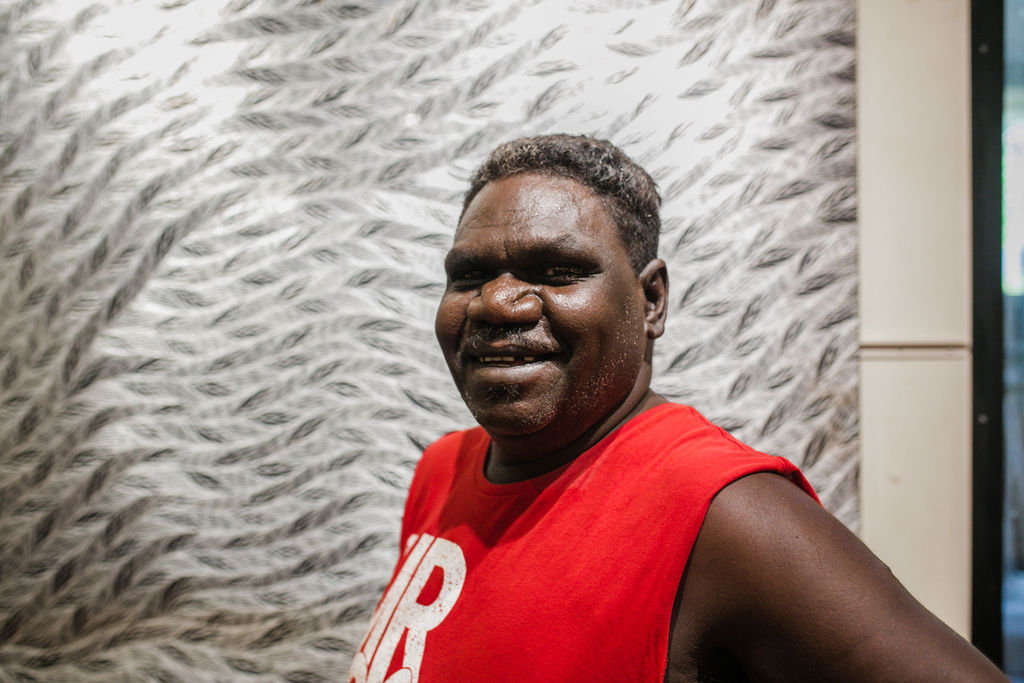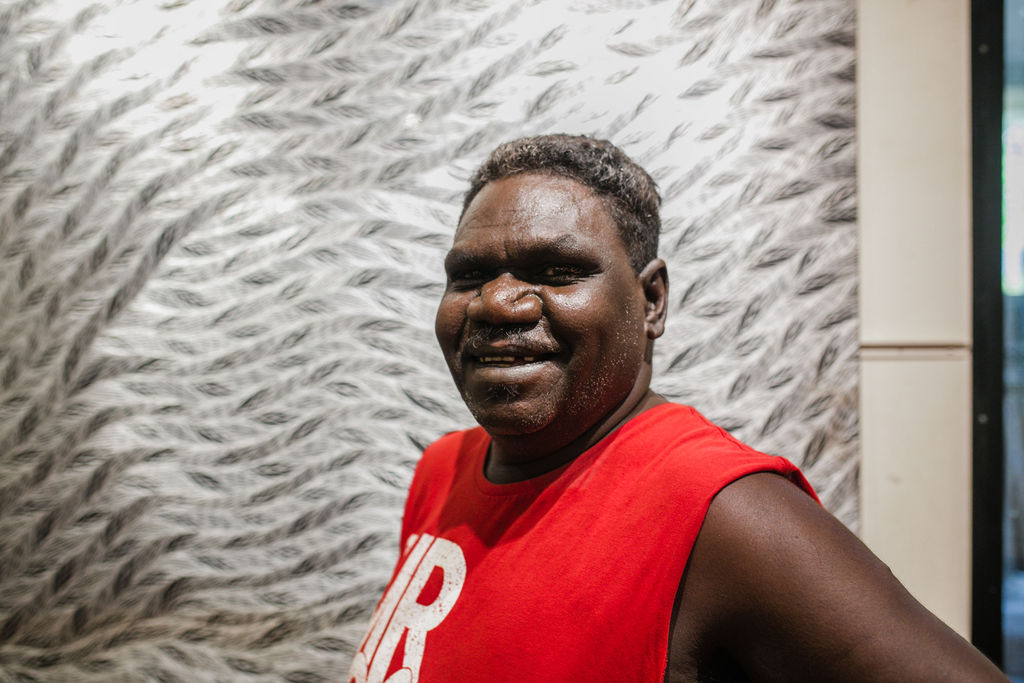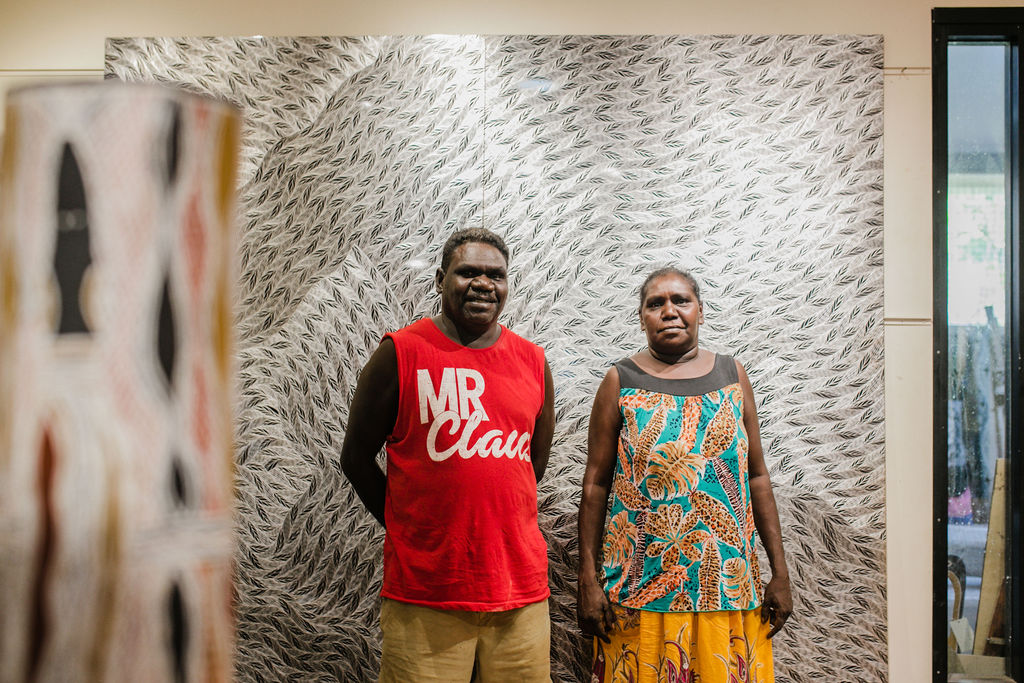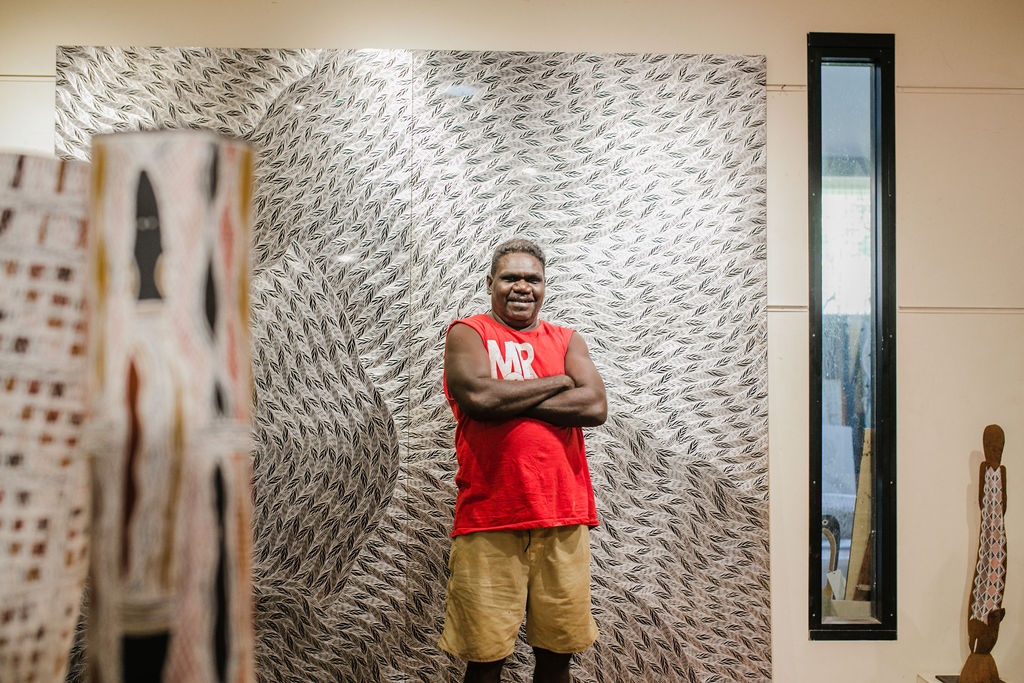
"This place, Garrapara, is replete with song and ceremony. It is a place where the deep saltwater meets the land, lined with shade trees. It is a Dhaḻwaŋu clan place where we used to stay, all my father’s fathers, including Birrikitji Gumana.
I will speak of the deep ocean currents as they come to the shoreline and onward to the yiŋapuŋapu (mortuary sand sculpture) behind the beach. I will speak of the ceremonial sand sculpture called Mayarriya, and of the casuarina trees that shake strangely in the breeze and whose deep names are Wurrmaliny, Malinyin and Warrapangi.
I will tell you about Mayathu, the yiŋapuŋapu itself, and all the areas of Garraparra, to the shifting stones called Waṉdharrŋa and the rock of the mountains Yinikambu, Biyarranydjarr, Guninyalŋu. As for this place, Garrapara, I will place myself there and speak of it from the saltwater side, yes, and speak about it for this project."
– YINIMALA GUMANA
More Info
Garrapara is a coastal area in the Blue Mud Bay. The site is a sacred burial area for the Dhaḻwaŋu clan. According to Dhaḻwaŋu song, two ancestral hunters drowned in the Bay, and their canoe and paddles washed ashore. In this work, Gunybi has shown the Yirritja saltwater (Muŋurru) through wavy designs. According to the artist, this design also shows the choppy water near Garrapara in the windy dry season.
The site is also significant for the Dhaḻwaŋu Yiŋapuŋapu, a mortuary sand sculpture used in ceremony. The body placed within the oval confines the contamination of the dead. Gunybi’s piece also refers to the Waŋupini (thunderhead cloud) that rise on the coast, rain freshwater inland, and return to the sea. Thus, according to Gunybi, the water traces kinship as well as the political and physical aspects of the region. Ultimately, it is a metaphor for the cycle of life and death.
For more information, read Buku-Larrŋgay arts co-ordinator Will Stubbs's essay on Gunybi's depictions of Garaparra.
– Buku-Larrŋgay Mulka Centre
Additional Information
Decade
2018
Medium
Natural pigments on eucalyptus bark
Dimensions (IN)
64 11/16 x 21 7/64
Dimensions (CM)
163 x 54
Credit
Kluge-Ruhe Aboriginal Art Collection of the University of Virginia.
The 2017-19 Kluge-Ruhe Maḏayin Commission.
Purchased with funds provided by Lilla and Chris Ohrstrom, 2023.
Narrative
Dhaḻwaŋu
The Dhaḻwaŋu clan belongs to the Yirritja moiety. The most important Dhaḻwaŋu songlines relate to...
Songline
Yiŋapuŋapu
The yiŋapuŋapu is a low relief sand sculpture, elliptical in shape, that is used in...
Location
2010s
The 2010s saw Buku-Larrŋgay Mulka go from strength to strength. At the National Aboriginal and...
About The Artist(s)
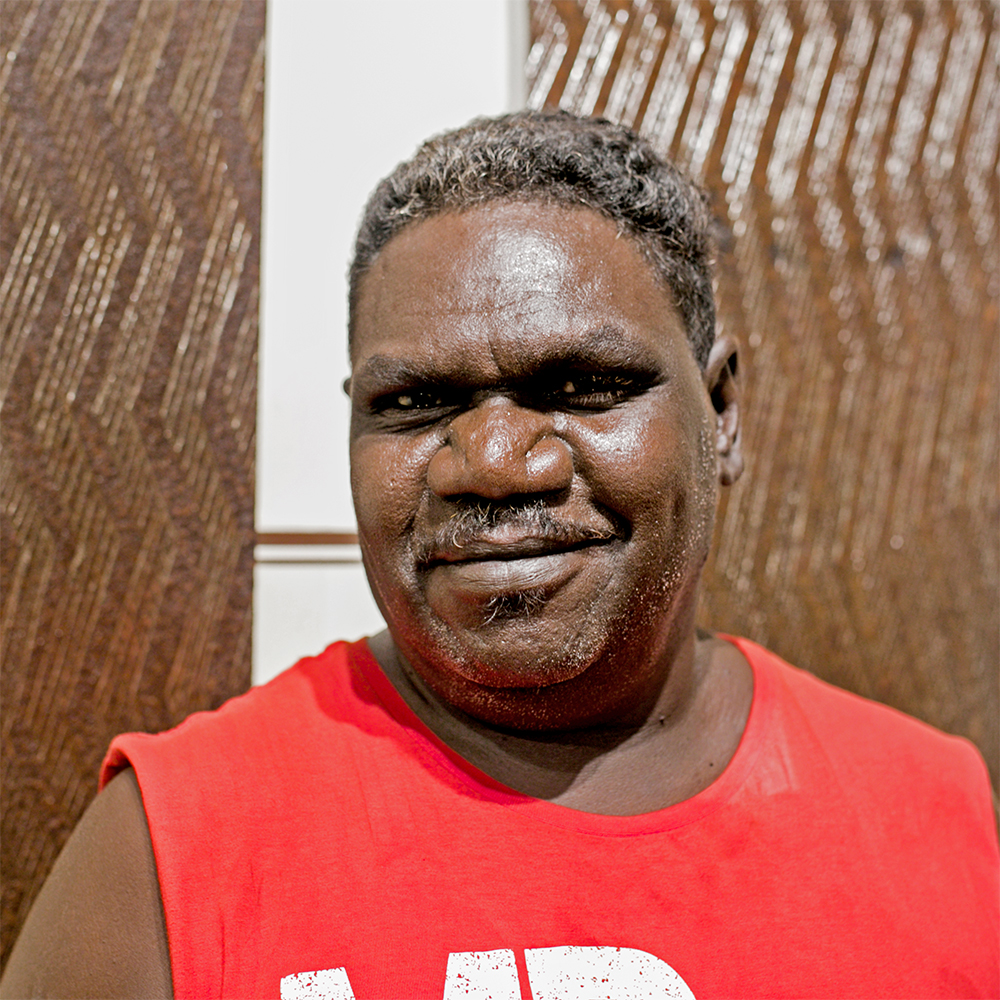
Clan
Ŋaymil
Artist Dates
Born 1973
Gunybi Ganambarr
Gunybi Ganambarr is considered one of the most radical innovators among contemporary Yolŋu artists. In 2006, he began incising the surface of his barks and experimenting with texture, shape and found materials. In 2008, he was awarded the Xstrata Coal Emerging Indigenous Artist Award at the Gallery of Modern Art at Queensland Art; in 2011, he won the Western Australian Indigenous Art Award at the Art Gallery of Western Australia; and in 2018, he earned first prize at the National Aboriginal and Torres Strait Islander Art Awards.
Collections Represented
Metropolitan Museum of Art, New York\
Museum of Contemporary Art Australia
National Museum of Australia
Queensland Art Gallery | Gallery of Modern Art
South Australian Museum



